Discover 100 Kannon statues in Numabukuro, Nakano Ward, Tokyo. Travel through 100 years of history at "100 Kannon Meijiji Temple."

We will introduce "Hyakukannon Meijiji Temple", which is a four-minute walk from Numabukuro Station on the Seibu Shinjuku Line in Tokyo. Over 180 Kannon statues are gathered here. At the "Lantern Offering Ceremony" on the last Sunday of July, lights are lit to pray for the happiness of children.
Hello. I'm Bonjiri, a Nakano Tourism Reporter. I live in Nakano with my family of three, and I'm raising a one-year-old boy. This time I'd like to introduce to you the Hyaku Kannon Meijiji Temple in Numabukuro, Nakano Ward.
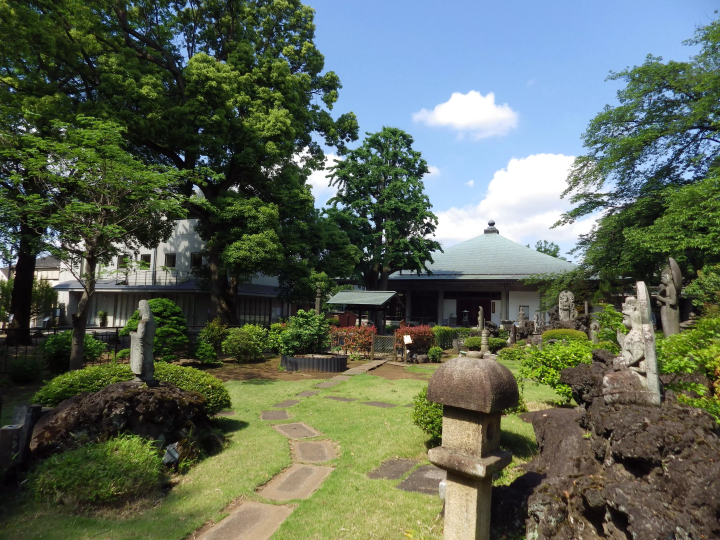
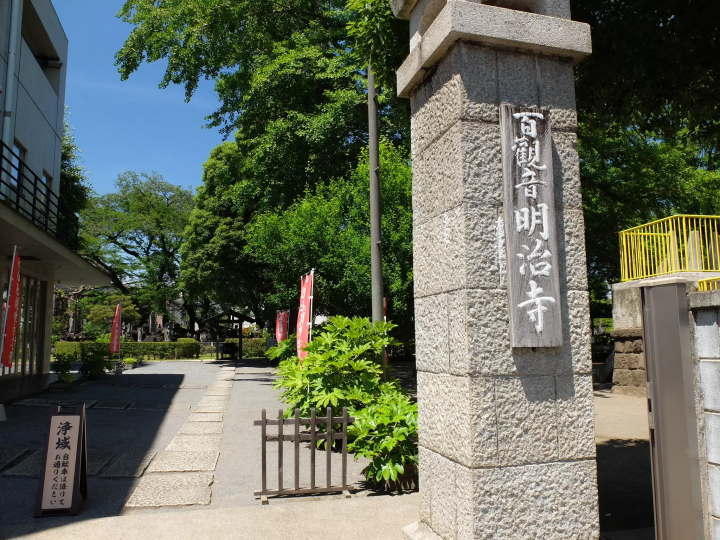
It is a 4-minute walk from the north exit of Numabukuro Station on the Seibu Shinjuku Line. Go through the residential area and up the slope until you see the sign.
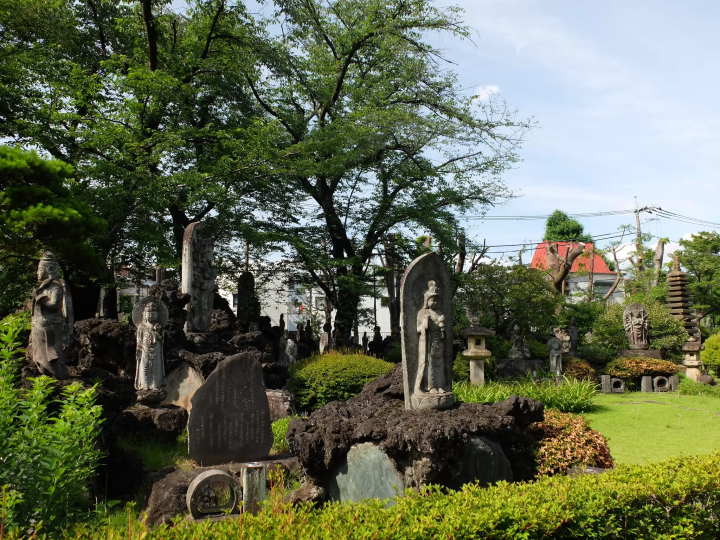
As you enter, you will be greeted by a Kannon statue with a gentle expression. The grounds are so quiet that you will forget for a moment that you are in Tokyo.
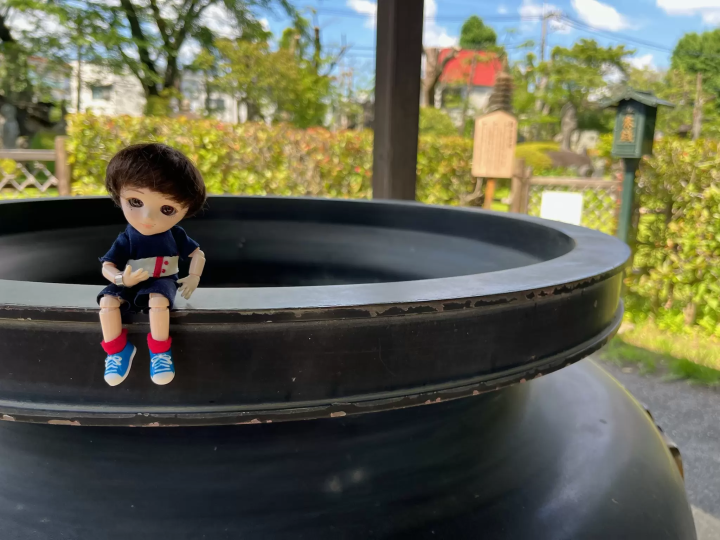
Taking a little break...Nachibi Nakano. He seems to be completely at ease.
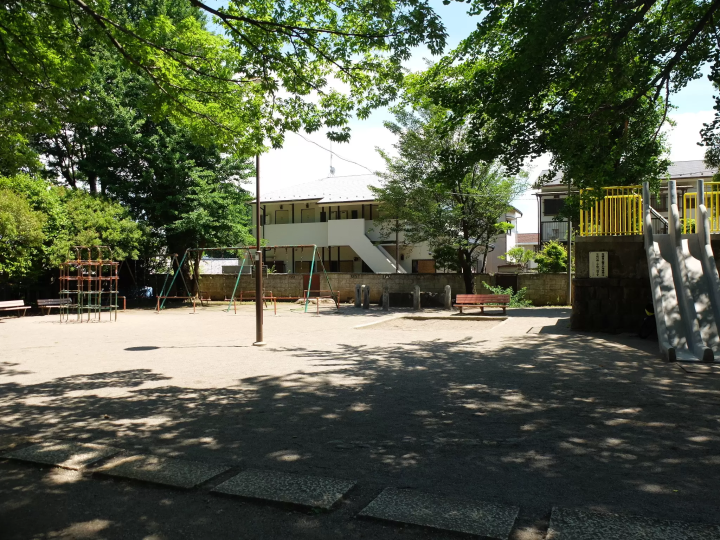
Part of the temple grounds is open to the public as Hyaku Kannon Park, which is equipped with playground equipment such as slides, jungle gyms, and swings.
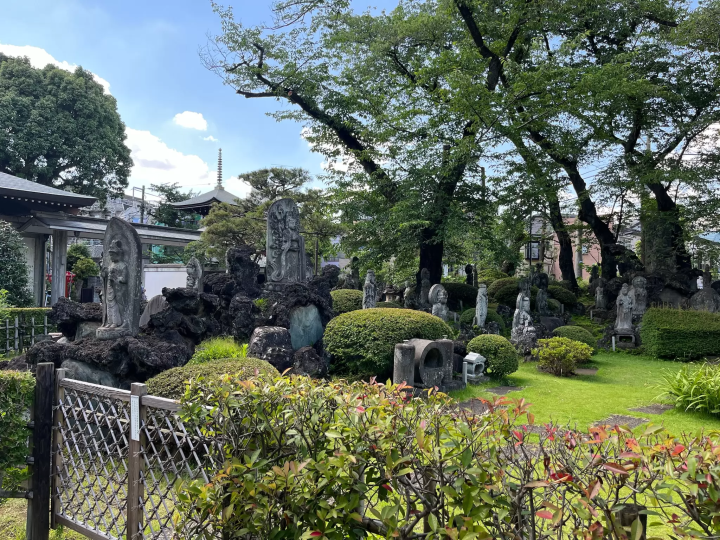
There are over 180 Kannon statues lined up in the Kannon Reijo garden on the temple grounds. When you see all these Kannon statues, you naturally feel a sense of dignity.
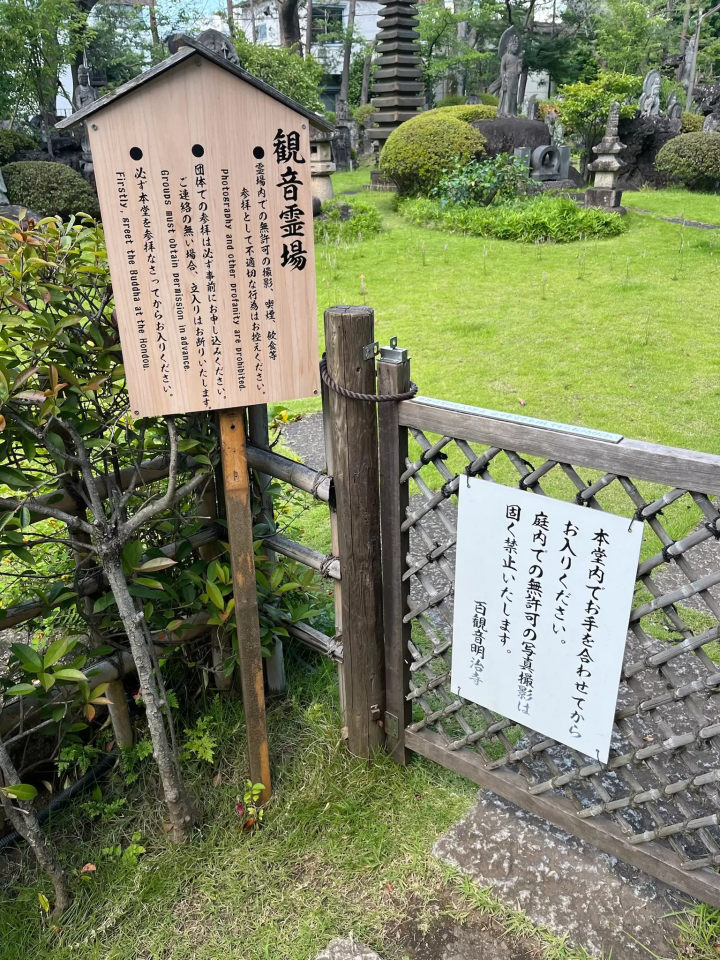
Please be sure to follow the rules on the signs at the Kannon Temple. Unauthorized photography is not permitted.
We spoke with the fifth-generation chief priest, Kusano Eiga.
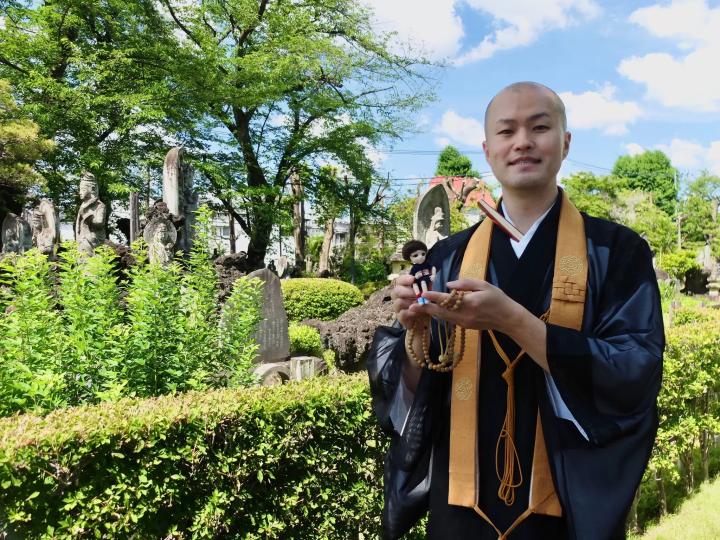
--Why are there so many Kannon statues? "Eishoni, who founded Meiji-ji Temple, erected the first Kannon statue in the hope that Emperor Meiji would be cured of his illness. It also contained gratitude and mourning for the lives lost in the turmoil of the Meiji Restoration, and the Kannon statues were lined up with donations from people who sympathized with that aspiration, resulting in the temple's current appearance," he explains, explaining the origins of Meiji-ji Temple. "Meiji-ji Temple was founded in 1912, so it is a relatively new temple, but it is actually older than Meiji Shrine."
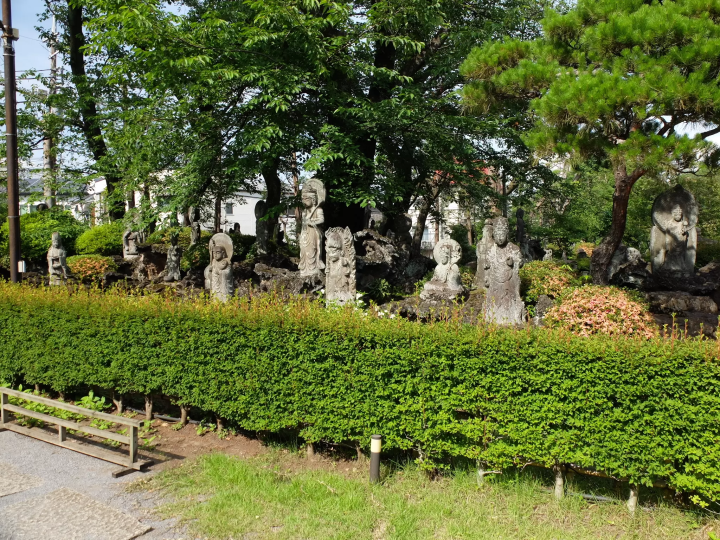
--Please tell us what the Hyaku Kannon is. "It refers to the 100 Kannon statues, including the Thirty-three Kannon statues in the Saigoku region, the Thirty-three Kannon statues in Bando, and the Thirty-four Kannon statues in Chichibu. In the past, it was impossible to visit the Kannon statues without a grand journey, so this Kannon sacred site was created so that people could at least make a connection with them here. The statues were filled with sand collected from the local area, so the land is firmly trodden down."
The appearance of the Kannon Temple changes with the seasons. The cherry blossoms and autumn leaves are both very beautiful!
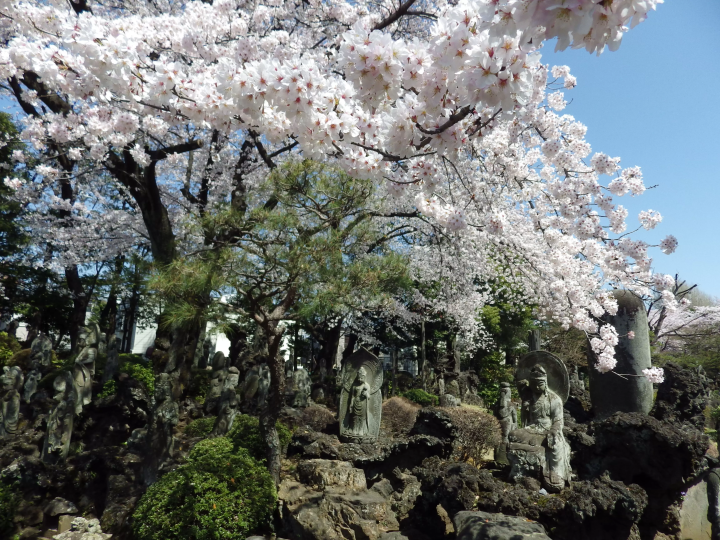
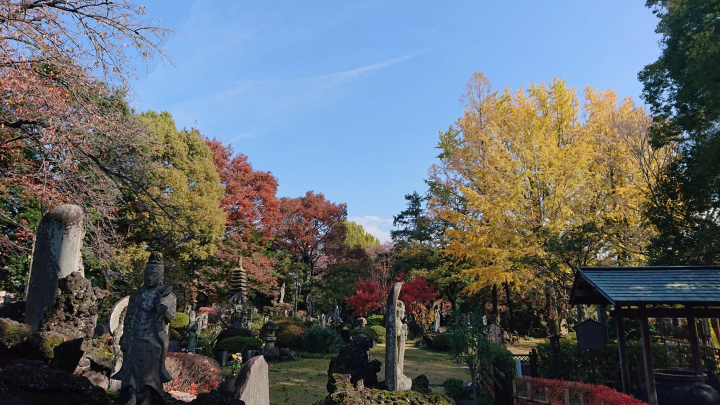
--Are there any other temples with this many Kannon statues? "I think it's quite rare to have the 100 Kannon statues enshrined as stone Buddhas. There are many temples that have collected stone Buddha statues from roadsides, but it's extremely rare to have stone Buddha statues like this 100 Kannon statues that were made to be erected here from the beginning."
- How should we view the Kannon? "Look at them all and try to find one that you think is "somehow I like."" Apparently, on New Year's Day 2024, a lottery was held to decide which Kannon to visit for the year. It's an event that makes you feel closer to the Kannon.
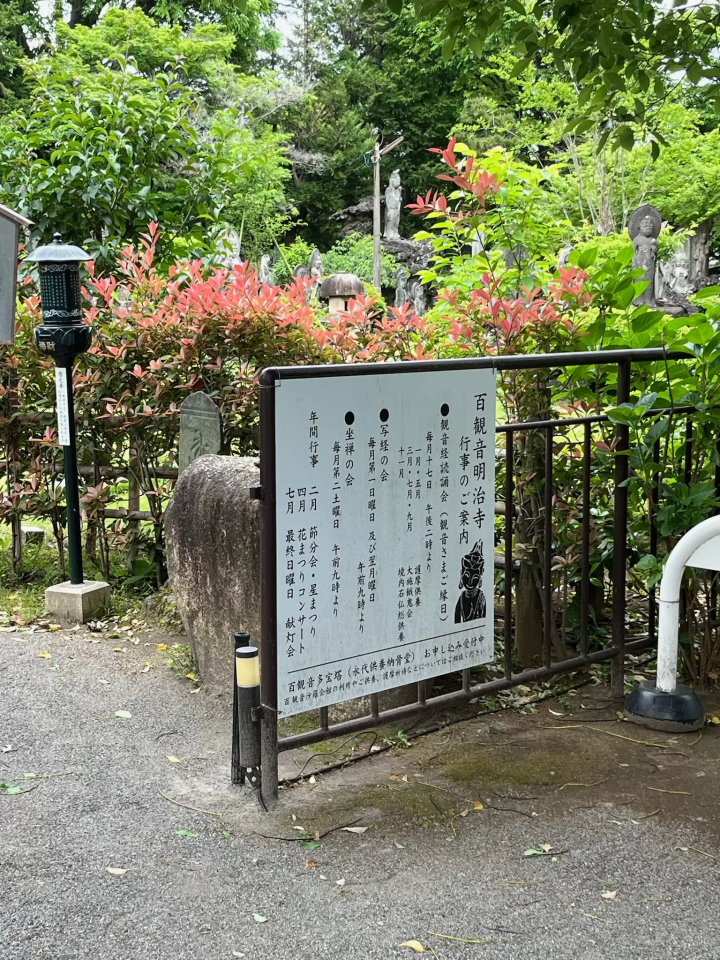
People of all ages, including those in their 20s, participate in the sutra copying and zazen sessions. Zazen is a form of meditation where you naturally regulate your breathing.
Every year on the last Sunday in July, a lantern offering ceremony is held. "It's a festival where we offer lanterns to our favorite Kannon. The lantern fees are donated to organizations and activities for children," says Kusano.
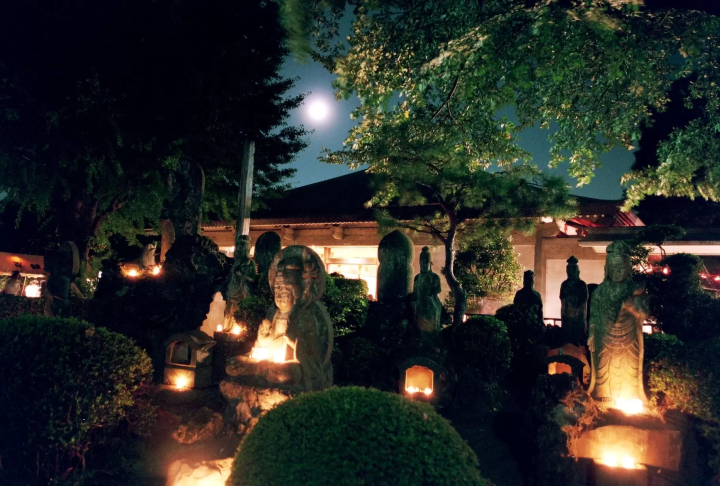
This song, "Lantern Ceremony," was also made into a song by Masashi Sada. It was written as a memorial song for the previous head priest, who was a close friend of the temple.
This temple now lives in peace, but there are still traces of the Pacific War.
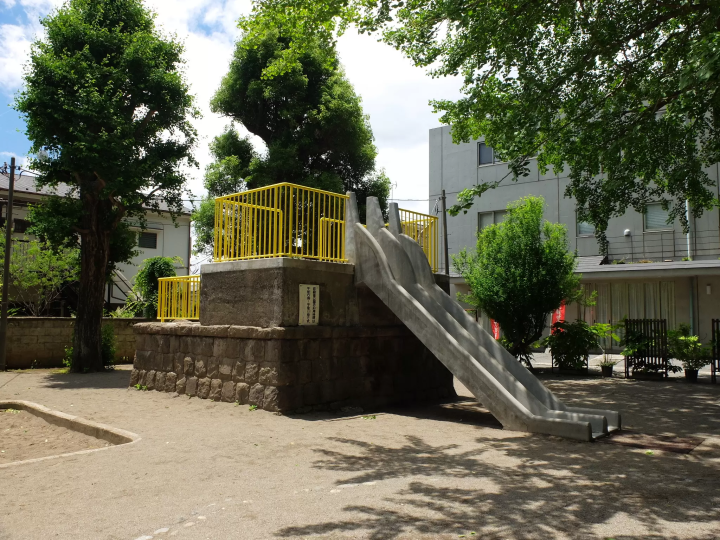
The slide in the park was once a magnificent bell tower. During the war, due to a shortage of metal, the bell was donated and the remaining base was turned into a playground with a slide attached. Perhaps because of this, the slope seems a little steep. It's a somewhat thrilling slide.
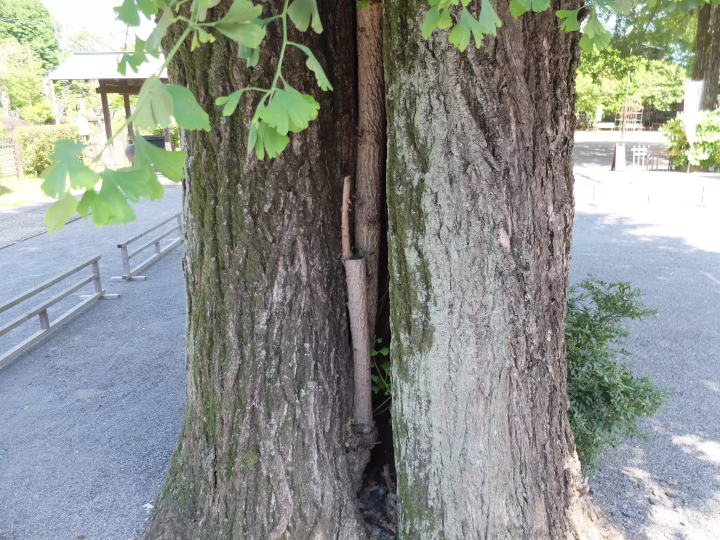
There is a hole in the ginkgo tree in front of the main hall caused by an air raid. When the main hall burned down in an air raid, the bark that barely escaped the flames grew back little by little, resulting in this shape.
The head priest, Mr. Kusano, explained the history of the temple and the Kannon Bodhisattva in an easy-to-understand way, and I learned a lot! "Kannon Bodhisattva has 33 bodies, and it is said that she appears in many different forms. Sometimes she may appear as my own child, or as an old lady in the neighborhood. That's how she guides us in the right direction." After hearing this, on the way home, I felt that my baby in the baby carrier felt somehow more reliable.
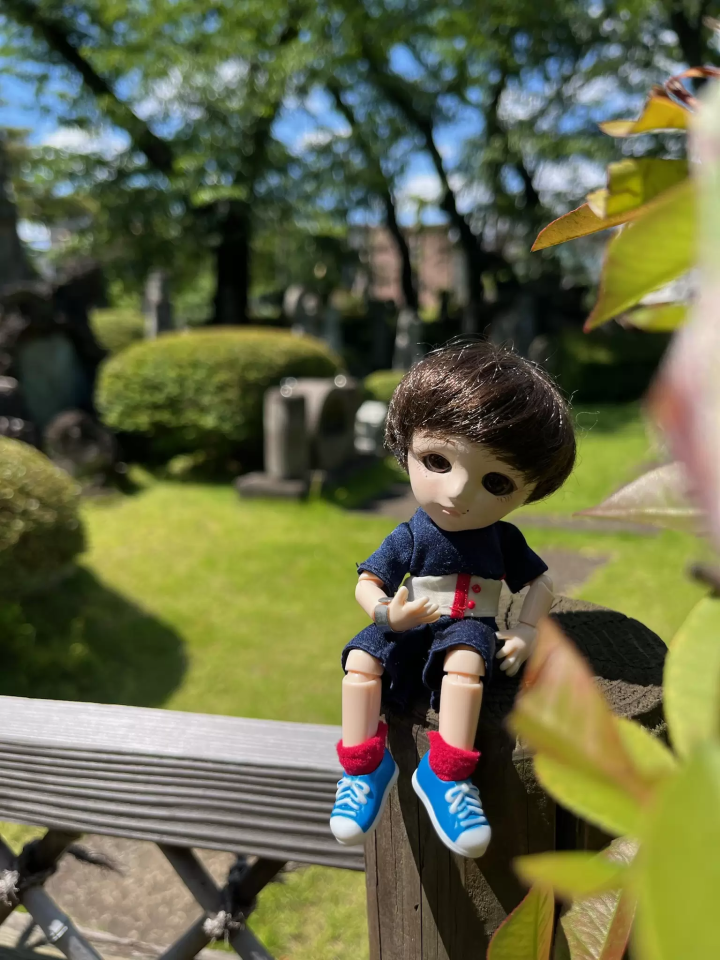
"Hyakukannon Meijiji Temple" has a history of over 100 years. If you are in Numabukuro, why not visit the temple?
Hyakukannon Meijiji Temple
Address: 2-28-20 Numabukuro, Nakano-ku
Access: 4 minutes walk from Numabukuro Station on the Seibu Shinjuku Line
Phone: 03-3386-3937
Hyakukannon Park opening hours: 6:00 to 18:00
Official website
Nakano city is located in the western part of Tokyo's 23 wards. It is especially famous for Nakano Broadway, known as the "holy land" of subculture, but it also has many other tourist attractions such as historic shrines and temples and gourmet food. While the area around Nakano Station is undergoing a "once in a century" redevelopment, the town is undergoing change, and the town is bustling with old-fashioned, friendly shopping streets, making Nakano a very diverse city. This diversity is also what makes it a city with a population of about 17,000 people from about 120 countries.
The contents on this page may partially contain automatic translation.
































![[2026 Edition] FORMUAL 1 JAPANESE GRAND PRIX Information](https://resources.matcha-jp.com/resize/720x2000/2025/10/05-245984.webp)


![[2025 Update] Namba's spectacular illuminations! "Namba Hikari Tabi" with approximately 1 million shining lights](https://resources.matcha-jp.com/resize/720x2000/2025/12/12-252825.webp)